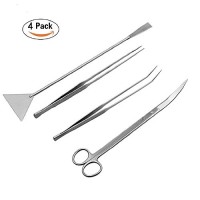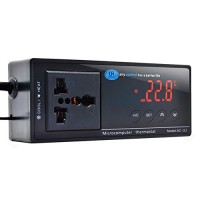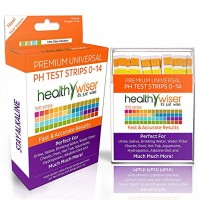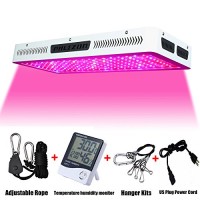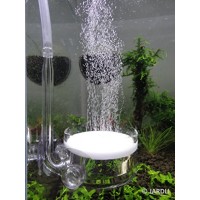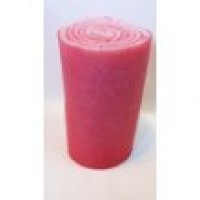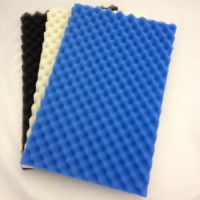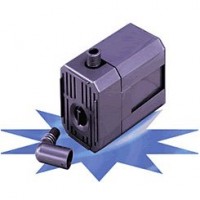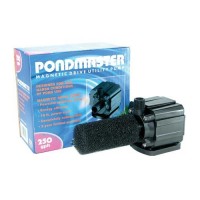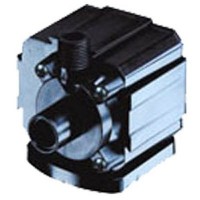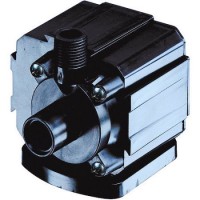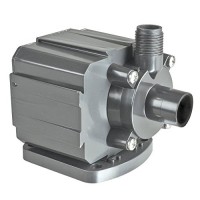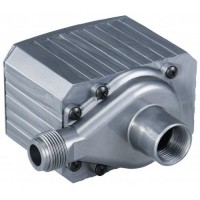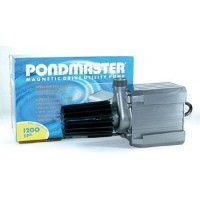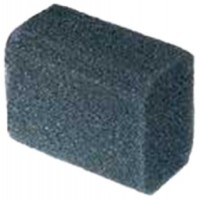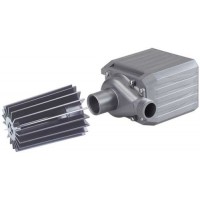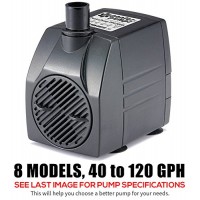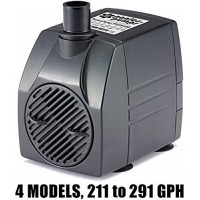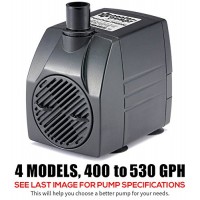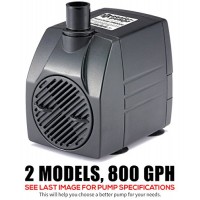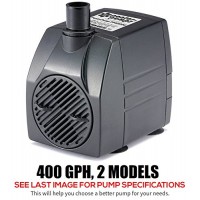Aquaponic Supplies
Aquaponics can be defined defined as a sustainable food production system that combines traditional aquaculture with hydroponics, with effluent from the water being used as nutrition for the plants. Despite the technical sounding nature of the description and etymological origins of quaponics, a rudimentary DIY aquaponics system is very easy to install by someone with basic skills in their own backyard or property. Complete kits are also sold that come with all basic growing tubs, plumbing systems and pumps if you prefer to get your start with a complete turn-key system.
For self sustenance or off the grid living or just as an experiment in natural life cycles aquaponics is a compelling field for the hobbyist or serious forward thinker interested in sustainable farming practices. Latest Books on Aquaponics
Refine Search
PERSUPER Aquatic Plant Tweezers Scissor Spatula Tool - 4 in 1 Stainless Steel Aquarium Tank Aquascaping Tools Set for Fish Starter Kits & Aquariums...
Why Choose Us : Must Have Aquatic Plant Kits: No more hands and finger shaving plants back into the sand/dirt.You are like a surgeon in your tanks! No more bull dosing through your plants with your ..
Petzilla Aquarium Temperature Controller with NTC SenSor Probe, 110V ac (1100W)
Two Working Mode (Cool & Heat) √ Cooling Mode:If Measured Temperature ≥ (setting temp. + temp. difference), the cooling process will operate. Otherwise, the cooling process will stop. √ Heating Mode..
pH Test Strips 0-14, Universal Strips To Test Water Quality For Swimming Pools, Hot Tub, Hydroponics, Aquarium, Kombucha, Household Drinking Water,...
Are you concerned about pH levels in your food, water supply, and garden? Whether it is for health concerns, growing vegetables or ensuring your pool isn't a hotbed of algae pH testing is an easy way ..
Phlizon Newest 2000W High Power Series Plant LED Grow Light,with Thermometer Humidity Monitor,with Adjustable Rope,Double Chips Full Spectrum Grow ...
About US: Phlizon is a professional LED light direct manufacturer , We have many excellent and creative products like plant grow light and led aquarium light.We can promise the quality of our goods an..
Pollen Glass CO2 Diffuser with U-Shape Connecting Tube for Aquarium Planted Tank (50 - 75 US gallons)
Diffusers, Excellent CO2 dissolve rate. Compatible for aquarium live plants tank. Compatible for pressurized Co2 tanks with at least 2 to 5 bubbles per second injection rate.Not suitable for DIY yeast..
Pond Filter Media 1" Pink/White 12" x 10 FEET Long by Complete Filtration Services Inc.
This filter material is superior to most materials because of the two layer that filter at different coarseness. This allows longer lengths of time between cleaningPinky filter product has two layers-..
Pond Foam Filter Media Pack (Set of 3) 17" x 11" Coarse, Medium and Fine.
Finest-Filters Set of 3 x foam filter pads are ideal for all pond filters. This set contains 3 x foams. (Coarse Black, Medium Beige and Fine Blue). These filter foams measure 11" x 17", and have an eg..
Pondmaster 02519 190 GPH Magnetic-Drive Utility Pump
190 drive pumps are made to run continuously, without seals to wear out. Highly energy efficient, the savings pass on to the consumer. Being filled with epoxy, not oil, they cannot leak oil into the p..
Pondmaster 02522 250 GPH Magnetic Drive Utility Pump
POND-MAG 2Danner Manufacturing025226NEW24..
Pondmaster 02523 350 GPH Magnetic Drive Utility Pump
Pondmaster, Pond-Mag 3, 350 GPH, Magnetic Drive Utility Pump, Durable, Engineered To Last, Powerful Ceramic Magnetic Impeller Is The Only Moving Part Which Makes These Pumps Extremely Energy Efficient..
Pondmaster 02523 350 GPH Magnetic Drive Utility Pump
Durable design engineered to last and operates submerged or in-line5 year limited warranty and UL listed/certifiedRigid pre-filter included18' grounded power cord..
Pondmaster 02525 500 GPH Magnetic Drive Utility Pump
DNR02525 Features: -Foam pre-filter included. -Danner pond master 500GPH pump with 216" cord. -Suitable for medium garden fountains, piped statuary and ponds. -500 GPH maximum flow with a 1.5 shut-off..
Pondmaster 02720 950 GPH Magnetic-Drive Utility Pump
Pondmaster, Pond-Mag 9.5, 950 GPH, Magnetic Drive Utility Pump, Durable, Engineered To Last, Powerful Ceramic Magnetic Impeller Is The Only Moving Part Which Makes These Pumps Extremely Energy Efficie..
PondMaster 02722 1200 Gph Magnetic-Drive Utility Pump
Pondmaster 02722 1200 GPH Magnetic-Drive Utility PumpSold on Amazon..
Pondmaster Danner 12285 Extra Large Pre-Filter
Danner 12285 extra large pre-filterCoarse polyester and foam offer biological filtrationCarbon impregnated media offers chemical and biological filtration, all offer mechanical filtrationFor all mid-r..
Pondmaster PM24 Pump 2400gph with Pre-Filter and 18-Foot Power Cord
Pondmaster 2400 gallons per hour (gph) magnet drive pump with 19 feet maximum lift (head). Uses 240 watts of electricity. The inlet is 1 female national pipe thread (FNPT) and the outlet is 1" male na..
PonicsPump PP12005: 120 GPH Submersible Pump with 5' Cord - 6W... for Fountains, Statuary, Aquariums & more. Comes with 1 year limited warranty.
PONICSPUMP 120 GPH SUBMERSIBLE PUMP DESIGNED FOR LONG SERVICE LIFE We designed this 120 Gallon Per Hour (GPH) pump to have a long service life by: • Using aluminum oxide ceramic shaft and bearings wh..
PonicsPump PP29105: 291 GPH Submersible Pump with 5' Cord - 16W… for Hydroponics, Aquaponics, Fountains, Ponds, Statuary, Aquariums & more. Comes w...
PONICSPUMP 291 GPH SUBMERSIBLE PUMP DESIGNED FOR LONG SERVICE LIFE We designed this 291 Gallon Per Hour (GPH) pump to have a long service life by: • Using aluminum oxide ceramic shaft and bearings wh..
PonicsPump PP40006: 400 GPH Submersible Pump with 6' Cord - 25W… for Hydroponics, Aquaponics, Fountains, Ponds, Statuary, Aquariums & more. Comes w...
PONICSPUMP 400 GPH SUBMERSIBLE PUMP DESIGNED FOR LONG SERVICE LIFE We designed this 400 Gallon Per Hour (GPH) pump to have a long service life by: • Using aluminum oxide ceramic shaft and bearings wh..
PonicsPump PP80006: 800 GPH Submersible Pump with 6' Cord - 60W… for Hydroponics, Aquaponics, Fountains, Ponds, Statuary, Aquariums, Waterfalls & m...
PONICSPUMP 800 GPH SUBMERSIBLE PUMP DESIGNED FOR LONG SERVICE LIFE We designed this 800 Gallon Per Hour (GPH) pump to have a long service life by: • Using aluminum oxide ceramic shaft and bearings wh..
PonicsPump Submersible Pump with for Hydroponics, Aquaponics, Fountains, Ponds, Statuary, Aquariums & more. Comes with 1 year limited warranty. (40...
PONICSPUMP 400 GPH SUBMERSIBLE PUMP DESIGNED FOR LONG SERVICE LIFE We designed this 400 Gallon Per Hour (GPH) pump to have a long service life by: • Using aluminum oxide ceramic shaft and bearings wh..
All aquaponics systems are usually grouped into several components or subsystems responsible for the effective removal of solid wastes, for adding bases to neutralize acids, and for maintaining water oxygenation. The complexity of each aquaponic system varies on the size and types of plants and fish grown. Decorative aquaponic systems can be used indoors or small herb growing goldfish tanks can be set-up in kitchens but even if it is a large scale system with hundreds of kilos of fish living in multiple tanks containing thousands of gallons the systems remain fairly uniform in concept.
Typical components include:
1. Growth tank: the tanks for raising and feeding the fish;
2. Settling tank: a unit for catching uneaten food and detached biofilms, and for settling out fine particulates;
3. Biofilter: a place where the nitrification bacteria can grow and convert ammonia into nitrates, which are usable by the plants;
4. Hydroponics subsystem: the portion of the system where plants are grown by absorbing excess nutrients from the water;
5. Sump: the lowest point in the system where the water flows to and from which it is pumped back to the rearing tanks.
Latest Books on Aquaponics

